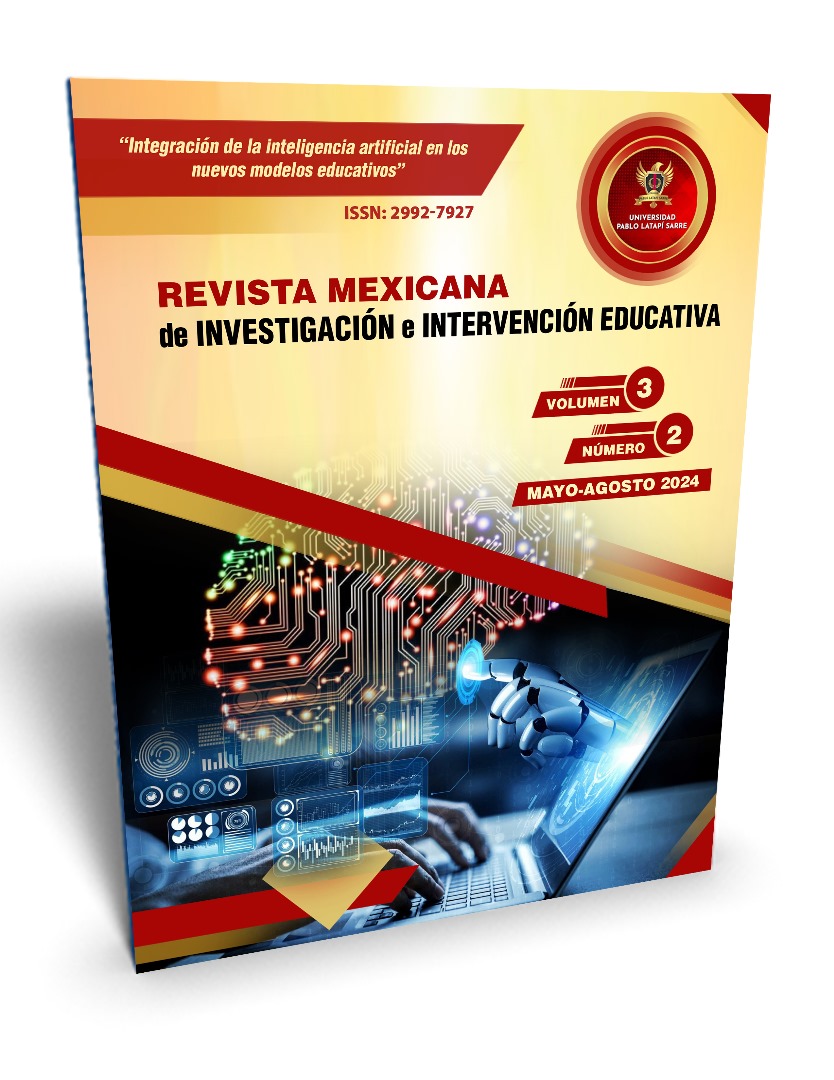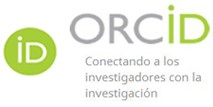Virtual Reality as a teaching strategy: Challenges and proposals from the teachers of Azogues-Ecuador
DOI:
https://doi.org/10.62697/rmiie.v3i2.97Keywords:
Educational innovation, study guide, virtual reality, educationAbstract
The integration of Virtual Reality in education has the potential to transform teaching and learning, providing immersive experiences that can increase student motivation and engagement, as well as improve their understanding of complex concepts. Therefore, it is vital to analyze the challenges and proposals of teachers in the city of Azogues for the use of VR as a teaching strategy that strengthens the teaching-learning process. Using a quantitative approach and a non-experimental cross-sectional cohort design, data was collected through surveys administered to 94 teachers from Azogues. The main results indicate that teachers face challenges such as lack of adequate training and training, as well as lack of access to VR technologies and resources. In response to this situation, this research proposes a teaching guide that helps teachers plan, implement and evaluate the use of VR in the classroom. This teaching guide will not only empower teachers with the knowledge and skills necessary to implement VR in their classes, but also encourages an innovative and proactive approach to education, providing teachers with a clear understanding of how to use VR.
Downloads
References
Agurto-Cabrera, J. C., & Guevara-Vizcaíno, C. F. (2023). Realidad virtual para la mejora del rendimiento académico en estudiantes de educación superior. Revista Metropolitana De Ciencias Aplicadas, 6(Suplemento 2), 233-243. https://doi.org/10.62452/xr07j373
Aznar, I., Romero, J., & Rodríguez, A. (2018). La tecnología móvil de Realidad Virtual en educación: una revisión del estado de la literatura científica en España. Edmetic, 7(1), 256-274. https://doi.org/10.21071/edmetic.v7i1.10139
Barrera, H., Barragán, T., & Ortega, G. (2017). La realidad educativa ecuatoriana desde una perspectiva docente. Revista Iberoamericana de Educación, 75(2), 9-20. https://rieoei.org/RIE/article/view/2629/3612
Calderón, Z., Yépez, M., Dávila, K., & Beltrán, C. (2023). Realidad virtual y aumentada en la educación superior: experiencias inmersivas para el aprendizaje profundo. Religación. Revista de Ciencias Sociales y Humanidades, 8(37), 1-15. https://doi.org/10.46652/rgn.v8i37.1088
Campos, E., Hidrogo, I., & Zavala, G. (2022). Impact of virtual reality use on the teaching and learning of vectors. Frontiers in Education, 7. https://doi.org/10.3389/feduc.2022.965640
Carrillo, M., & Roa, L. (2018). Diseñando el aprendizaje desde el Modelo ADDIE. (Trabajo de grado). Universidad de La Sabana.
Castellanos, D., & Melo, M. (2018). Aproximación a la realidad aumentada y virtual como herramienta didáctica pedagógica: Tecnología con un enfoque a las etnociencias. Anales, 1(376). https://doi.org/10.29166/anales.v1i376.1784
Córcoles, M., Tirado, S., González, J., & Cózar, R. (2023). Uso de entornos de realidad virtual para la enseñanza de la Historia en educación primaria. Education in the Knowledge Society (EKS), 24, 1-12. https://doi.org/10.14201/eks.28382
Ecuador. Ministerio de Educación. (2018). Estudiantes experimentaron el aprendizaje con realidad aumentada. https://educacion.gob.ec/estudiantes-experimentaron-el-aprendizaje-con-realidad-aumentada/
Ecuador. Secretaría Nacional de Educación Superior, Ciencia y Tecnología. (2018). Realidad virtual: innovando la formación técnica y tecnológica. https://www.educacionsuperior.gob.ec/realidad-virtual-innovando-la-formacion-tecnica-y-tecnologica/
Espinoza, K., Plaza, J., Bravo, B., & Mogrovejo, E. (2023). Realidad Virtual y Educación: Retos y Propuestas Desde Actores Educativos del Bachillerato Público en Ecuador. Estudios y Perspectivas Revista Científica y Académica, 3(2), 156-176. https://doi.org/10.61384/r.c.a..v3i3.40
Ferreira, R., Campanari, R., & Rodríguez, A. (2021). La realidad virtual como herramienta para la educación básica y profesional. Revista Científica General José María Córdova, 19(33), 223-241. https://doi.org/10.21830/19006586.728
García, L., Porras, D., Adame, J., Delezma, F., López, H., & Ortiz, C. (2020). Realidad Virtual como técnica de enseñanza en Educación Superior: perspectiva del usuario. Enseñanza & Teaching: Revista Interuniversitaria de Didáctica, 38(1), 111-123. https://doi.org/10.14201/et2020381111123
Instituto Superior Tecnológico del Austro. (2023). Aula ACTIVAR, metodología de estudio innovadora en Mecánica Automotriz. https://insteclrg.edu.ec/aula-activar-metodologia-de-estudio-innovadora-en-mecanica-automotriz/
López, B., Mendoza, F., García, R., Macías, M., & Medina, Y. (2023). Importancia de la Realidad Virtual en el proceso enseñanza-aprendizaje, en nivel básico (preescolar), caso de estudio “Cristóbal Colón”. Revista NeyArt, 1(2), 37-51. https://doi.org/10.61273/neyart.v1i2.35
Marougkas, A., Troussas, C., Krouska, A., & Sgouropoulou, C. (2023). Virtual Reality in Education: A Review of Learning Theories, Approaches and Methodologies for the Last Decade. En Electronics (Switzerland) (Vol. 12, Número 13). Multidisciplinary Digital Publishing Institute (MDPI). https://doi.org/10.3390/electronics12132832
Moreno, N., & Galván, M. (2020). Realidad Aumentada y Realidad Virtual para la creación de escenarios de aprendizaje de la lengua inglesa desde un enfoque comunicativo. Didáctica, innovación y multimedia, 38, 1-16. https://raco.cat/index.php/DIM/article/view/371406
Orellana, C. (2016). La estrategia didáctica y su uso dentro del proceso de enseñanza y aprendizaje en el contexto de las bibliotecas escolares. e-Ciencias de la Información, 7(1), 1-24. https://doi.org/10.15517/eci.v7i1.27241
Organización de las Naciones Unidas para la Educación, la Ciencia y la Cultura. (2018). Realidad virtual en la escuela. https://courier.unesco.org/es/articles/realidad-virtual-en-la-escuela
Sánchez, M., Aguilar, M., Martínez, J., & Sánchez, J. (2020). Estrategias didácticas en entornos de aprendizaje enriquecidos con tecnología (antes del COVID-19). Universidad Autónoma Metropolitana.
Torres, G., Franco, A., Gutiérrez, M., & Suárez, A. (2017). Metodología para el modelado de sistemas de Realidad Virtual para el aprendizaje en dispositivos móviles. Pistas Educativas, 39, 518-534. http://itcelaya.edu.mx/ojs/index.php/pistas
Urquiza, L., Auria, B., Daza, S., Carriel, F., & Navarrete, R. (2016). Uso de la realidad virtual, en la educación del futuro en centros educativos del Ecuador. Revista Ciencia e Investigación, 1(4), 26-30. https://doi.org/10.26910/issn.2528-8083vol1iss4.2016pp26-30
Downloads
Published
How to Cite
Issue
Section
License
Copyright (c) 2024 Esteban Giovanny García-Herrera, Claudio Fernando Guevara-Vizcaíno

This work is licensed under a Creative Commons Attribution-NonCommercial-ShareAlike 4.0 International License.
Authors who publish in Revista Mexicana de Investigación e Intervención Educativa (RMIIE), of Universidad Pablo Latapí Sarre agree to the following terms:
1. Copyright
Authors retain unrestricted copyright to their work. Authors grant the journal the right of first publication. To this end, they assign the journal non-exclusive exploitation rights (reproduction, distribution, public communication, and transformation). Authors may enter into additional agreements for the non-exclusive distribution of the version of the work published in the journal, provided that acknowledgment of its initial publication in this journal is given.
© The authors.
2. License
The articles are published in the journal under the Creative Commons Attribution-NonCommercial-ShareAlike 4.0 International License (CC BY-NC-SA 4.0). The terms can be found at: https://creativecommons.org/licenses/by-nc-sa/4.0/deed.en
This license allows:
- Sharing: Copying and redistributing the material in any medium or format.
- Adapting: Remixing, transforming, and building upon the material.
Under the following terms:
- Attribution: You must give appropriate credit, provide a link to the license, and indicate if any changes were made. You may do this in any reasonable manner, but not in any way that suggests the licensor endorses or sponsors your use.
- NonCommercial: You may not use the material for commercial purposes.
- ShareAlike: If you remix, transform, or build upon the material, you must distribute your creation under the same license as the original work.
There are no additional restrictions. You may not apply legal terms or technological measures that legally restrict others from doing anything the license permits.









